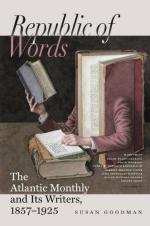Mr. Wilson so often returns to these “Samanca” papers, and appears to labor under so many delusions in regard to them, that, hopeless as the attempt may seem, we cannot help trying to let a little daylight into his mind. “Mr. Prescott,” he writes, “having obtained copies of the most important Simanca” [the reader must not be surprised at these little variations of orthography] “papers of Ximenes’ collection, supposes them a new discovery, of great value. Doubtless they are;” [then there could be no great harm in supposing it;] “his agents did not fail to represent them to him in the most exalted terms, to enhance the value of their services according to the Spanish custom.” Now we can assure Mr. Wilson that Mr. Prescott had not in his possession a copy of a single document placed in the Archives of Simancas (for so an excusable partiality for custom, and not any want of respect for our author, obliges us to spell this name) by Cardinal Ximenes. He will also, we trust, be glad to learn, that, for the documents relating to the Emperor Charles the Fifth which Mr. Prescott did receive from Simancas, he paid not a real beyond the established charge of the official copyists,—a charge which is the same in all cases, whatever may be the value of the originals,—the task of examining the collection and selecting the letters suitable for the purpose having been a labor of love on the part of the distinguished scholar by whom it was undertaken.
Mr. Wilson is animated by a fervent hatred against Cardinal Ximenes,—or “Jimines,” as he sometimes calls him. He terms him “a monster,” and “a wretch,” and is especially indignant at his having “founded the Samanca collection of papers.” “Any one,” he adds, “who will carefully examine them will see that hardly a single paper has been put into this collection that does not, in some way, reflect glory on the church, or show the royal approval of the Inquisition.” We cannot undertake to say what discoveries might be made by a person who should carefully examine the collection of papers at Simancas. A scholar on whom the antediluvian length of life necessary for such a labor had been bestowed might also be endowed with commensurate powers of intellect that might lead to the most astonishing results. Our own knowledge of the collection is limited to a very small portion of its contents,—a




